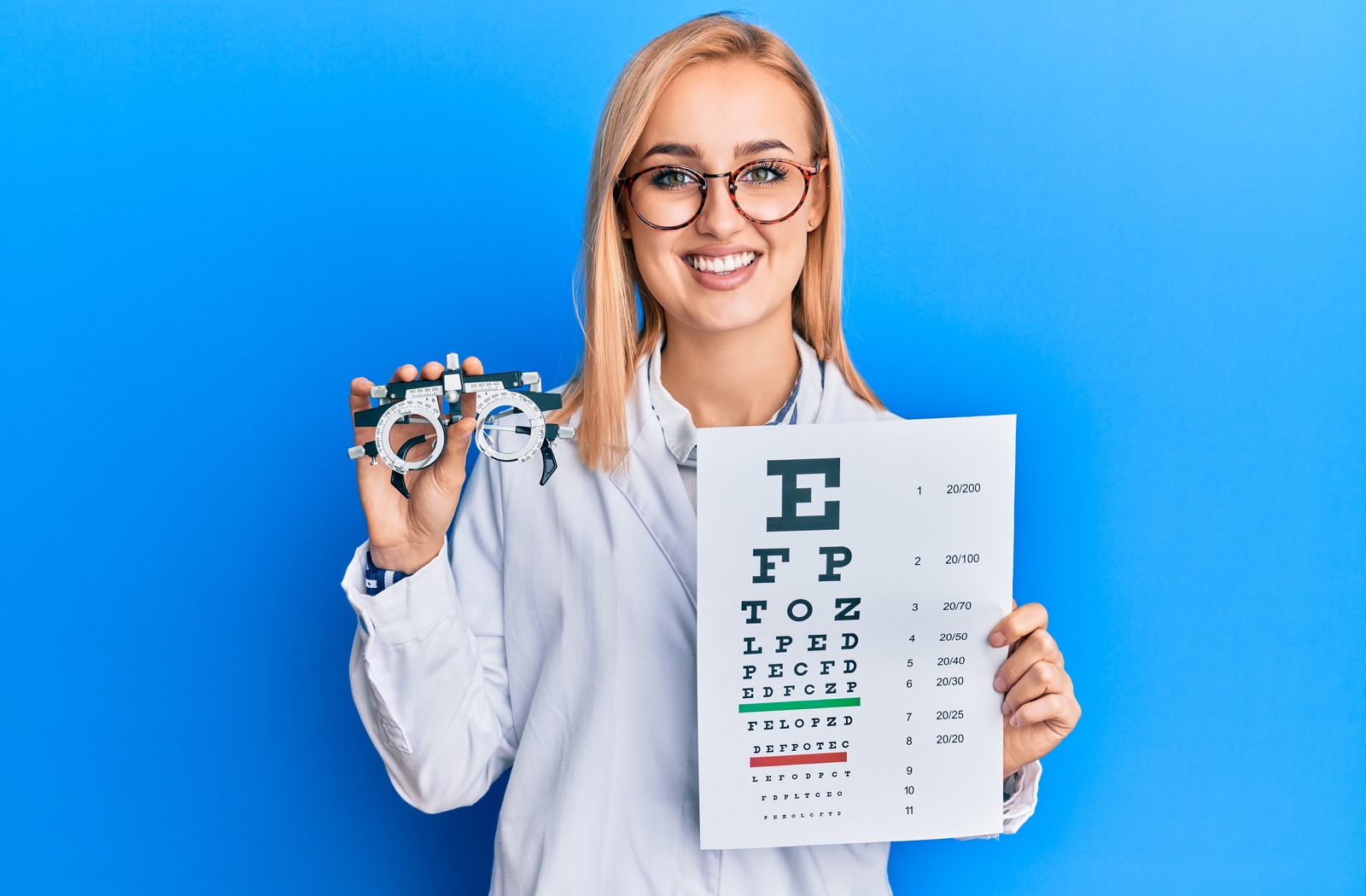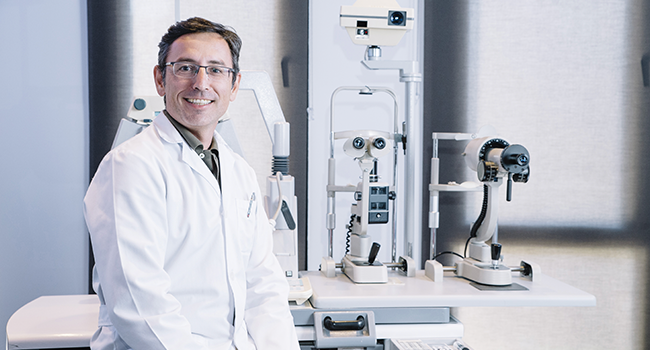Just How an Eye Doctor Can Transform Your Vision Health in Chino
Just How an Eye Doctor Can Transform Your Vision Health in Chino
Blog Article
Exploring the Most Current Technological Improvements in Optometry and What They Mean for Optometrists
In the ever-evolving field of optometry, recent technical advancements are improving just how experts approach eye treatment. From the accuracy of Optical Coherence Tomography to the nuanced insights provided by AI-driven diagnostic devices, these innovations are establishing new requirements in individual analysis and treatment. Teleoptometry is positioned to redefine ease of access, ensuring that competence transcends geographical restrictions. As these advancements penetrate the practice, eye doctors are confronted with the obstacle of embracing these devices to boost client outcomes. The concern stays: how will these technical shifts redefine the roles and obligations within the profession?
Advancements in Diagnostic Devices
Progressing the field of optometry, technologies in analysis tools have actually revolutionized the method eye treatment specialists analyze and identify ocular problems and visual impairments. The previous years has witnessed considerable technical advancements, enabling more extensive and precise evaluations. Optical Comprehensibility Tomography (OCT), for example, gives high-resolution cross-sectional photos of the retina, permitting the very early discovery of diseases such as glaucoma and age-related macular deterioration. This non-invasive imaging strategy has actually come to be vital in modern optometric practice.
An additional trick innovation is the intro of advanced corneal topography systems, which map the surface area curvature of the cornea with accuracy. These tools are specifically helpful for fitting get in touch with lenses and identifying corneal problems. Additionally, digital retinal imaging has transformed typical ophthalmoscopy, using comprehensive, panoramic views of the retina that facilitate thorough aesthetic evaluations.
The advancement of wavefront aberrometry has likewise been critical, enabling the analysis of refractive errors with unparalleled accuracy (Eye Doctor). This modern technology aids in customizing restorative lenses and improving medical outcomes for refractive surgeries. Collectively, these diagnostic advancements empower optometrists to provide superior individual treatment, making certain early intervention and customized therapy strategies, ultimately boosting aesthetic wellness end results
AI in Person Monitoring
Structure on the structure of cutting-edge analysis devices, the incorporation of expert system (AI) in client management represents a transformative leap for optometry. AI systems are increasingly used to improve performance, precision, and personalization in patient treatment. By examining large amounts of information, AI can identify patterns and predict prospective ocular conditions, enabling eye doctors to customize treatments better. This capability is essential in managing persistent eye illness such as glaucoma and diabetic retinopathy, where very early discovery and continuous surveillance are essential.
Additionally, AI-driven platforms promote streamlined person interactions and management processes. Automated organizing, virtual appointments, and customized follow-up plans not only boost patient complete satisfaction but likewise maximize time management for experts. These systems can triage clients based upon the necessity of their conditions, making sure that those in crucial demand obtain prompt focus.
Moreover, AI enhances decision-making by giving optometrists with evidence-based recommendations and treatment pathways. By incorporating data from digital wellness records, AI tools offer understandings that notify scientific choices, lowering the danger of errors and boosting client results. As AI remains to progress, its function in person management will likely expand, reshaping the landscape of optometric treatment.
Advancements in Retinal Imaging
In the world of optometry, retinal imaging has observed remarkable technological improvements that are boosting analysis capabilities and patient treatment. Developments such as Optical Coherence Tomography (OCT) and fundus photography have actually reinvented exactly how eye doctors imagine and analyze the retina.
Improved imaging techniques like OCT angiography are more refining diagnostic you can find out more precision. This non-invasive method maps blood circulation in the retina, providing important understandings right into vascular health click now without the demand for dye shots. Furthermore, flexible optics modern technology is being integrated into retinal imaging systems to correct ocular aberrations, delivering unprecedented photo quality. Such advancements assist in the identification of minute retinal modifications that could symbolize disease progression.
Moreover, developments in expert system are boosting retinal imaging by allowing automatic analysis of huge datasets. These systems assist eye doctors in identifying patterns a sign of pathology, consequently enhancing diagnostic accuracy and efficiency. Collectively, these technologies are transforming retinal imaging into a cornerstone of contemporary eye treatment, improving outcomes and broadening therapeutic opportunities.
Teleoptometry's Expanding Duty
Teleoptometry is significantly becoming an important element of eye care, driven by developments in digital interaction and analysis devices. As optometry embraces electronic makeover, teleoptometry facilitates remote assessments, allowing optometrists to expand their services past standard boundaries. This is especially useful in country and underserved areas where accessibility to specialized eye treatment is usually restricted. By leveraging high-resolution video clip conferencing and advanced retinal imaging, eye doctors can carry out comprehensive eye tests from afar, making certain timely diagnosis and treatment.
The assimilation of expert system (AI) additional enhances teleoptometry, enabling the evaluation of visual information and helping in the detection of eye problems such as glaucoma and diabetic retinopathy. AI-powered formulas can quickly analyze intricate imaging information, offering eye doctors with beneficial insights that bolster clinical decision-making.
Additionally, teleoptometry supports continuity of care via seamless integration with electronic health and wellness records (EHRs), permitting optometrists to preserve extensive client backgrounds. When consulting with different specialists., this ensures that patients obtain customized and constant care also.
Regardless of these benefits, obstacles stay, consisting of ensuring data safety and taking care of client assumptions. Teleoptometry represents a substantial stride in the direction of even more available, effective, and patient-centered eye treatment. As modern technology progresses, its duty is poised to increase even more.

Future Fads in Eye Care
A myriad of ingenious trends is readied to improve the future of eye treatment, driven by technological developments and the advancing demands of patients. One substantial fad is the combination of fabricated knowledge (AI) in diagnostics, which promises to boost the accuracy and effectiveness of eye exams. AI formulas can assess huge quantities of data from retinal images, possibly discovering conditions like diabetic person retinopathy and glaucoma earlier than typical methods.
Moreover, personalized medicine is obtaining grip in optometry, with hereditary screening notifying tailored therapy plans. This approach aims to enhance client outcomes by customizing interventions to individual hereditary profiles. Wearable technology, linked here such as wise call lenses, is also coming up, providing real-time tracking of intraocular pressure or sugar degrees, therefore offering continual understandings right into systemic and eye health.
The fostering of enhanced fact (AR) and online fact (VR) in training and client education is one more emerging trend. These modern technologies offer immersive experiences that can improve understanding and abilities both for eye doctors and people. As these fads develop, eye doctors must remain abreast of technical improvements to offer sophisticated treatment, making sure enhanced individual end results and fulfillment in the dynamic landscape of eye care.
Verdict

Collectively, these analysis advancements encourage optometrists to deliver exceptional person care, guaranteeing early treatment and customized treatment techniques, eventually enhancing visual health and wellness end results.

As these modern technologies proceed to develop, eye doctors have to adapt and incorporate them into practice, ultimately enhancing workflow performance and raising the standard of eye care supplied to patients.
Report this page